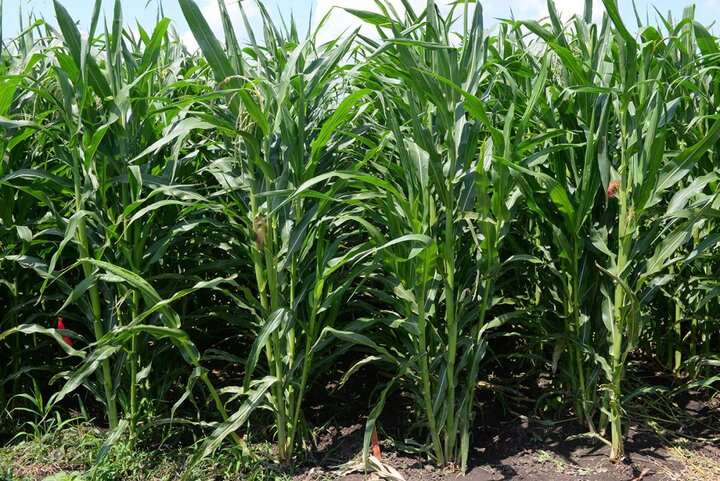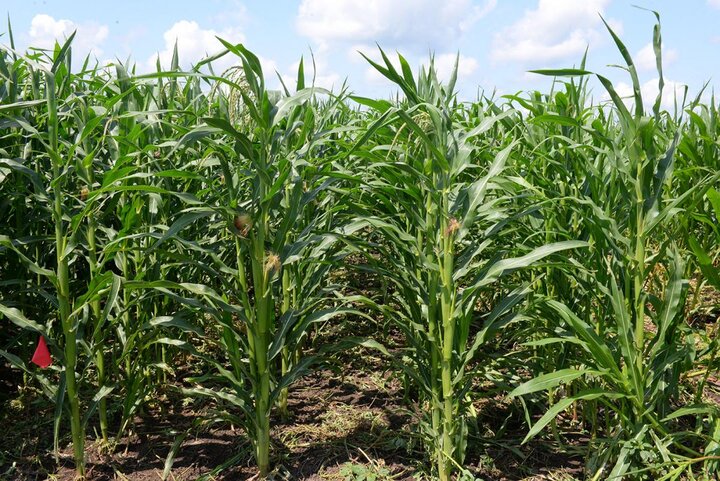Popcorn is an important crop for many Nebraska farmers. For the last 20 years Nebraska has annually produced more popcorn than any other state in the United States.
Time lapse video of the critical time for weed removal in popcorn. Top left: no PRE herbicide applied and weeds removed at V9 popcorn growth stage; top right: Bicep II Magnum 1.6 qt/acre applied pre-emergence and remaining weeds removed at V9 popcorn growth stage; bottom left: weed-free popcorn; and bottom right: no PRE herbicide applied and weeds removed at V3 popcorn growth stage.Limited agronomic field research has been conducted in popcorn and growers have generally relied on field corn research and the experience of agronomists and other farmers. However, popcorn is generally smaller, weaker, and less competitive with weeds than a typical field-corn hybrid.
Understanding the critical time of weed removal (CTWR) is necessary for designing effective weed management programs in popcorn that do not result in yield loss. The CTWR is the point at which weeds must be removed to avoid crop yield loss. Pre-emergence herbicides control early emerging weeds which delays the application or number of post-emergence (POST) herbicide applications.
By controlling early emerging weeds, the PRE herbicide gives an advantage to the crop to grow with less competition from weeds. PRE herbicides help prevent POST herbicide-resistance in weeds by reducing the size and number of weeds exposed to POST herbicide. The time and duration of weed competition along with weed species, weed size, and the number of weeds ultimately determines the crop yield loss. Field corn research suggests that the CTWR ranges from the V1 growth stage (1st collared leaf) to the V7 stage (7th collared leaf) in the United States (Halford et al. 2001; Norsworthy and Oliveira 2004). Under Nebraska growing conditions the CTWR in field corn ranges from V4 to V7 (Evans et al. 2003).
Nebraska Research on the Critical Time of Weed Removal in Popcorn
Field studies were conducted in 2017 and 2018 at UNL’s South Central Agricultural Laboratory near Clay Center to determine the CTWR in popcorn produced with and without Bicep II Magnum (a premix of atrazine/S-metolachlor; 1.6 quarts per acre) applied PRE. The study was laid out in a spilt-plot design with PRE herbicide as the main plot and weed removal timing as the subplot. Main plots included no herbicide or Bicep II Magnum applied PRE. Subplot treatments included weed-free control, non-treated control, and weed removal timing at V3, V6, V9, V15, and R1 popcorn growth stages and then keeping the field weed-free throughout the season.




Conclusion
- In this study, popcorn competed with Palmer amaranth, common waterhemp, velvetleaf, common lambsquarters, and foxtail (Figures 1-2).
- In the absence of a PRE herbicide, the CTWR occurs at the V4 to V5 popcorn growth stage (Figures 2 and 4).
- When Bicep II Magnum was applied PRE, the CTWR was delayed until V10 to V15 (Figures 1 and 3).
- When no PRE herbicide is applied, weeds must be controlled before the V4 popcorn growth stage to avoid yield loss.
- In this study, using a PRE herbicide such as Bicep II Magnum, could delay the CTWR until the V10 growth stage.
- POST herbicides should be applied based on weed height and crop stage guidelines found in the herbicide label.
For more information on this study, see this article in the journal, Weed Technology.
References
Evans, Sean, Stevan Knezevic, John Lindquist, Charles Shapiro, Erin Blankenship (2003). Nitrogen application influences the critical period for weed control in corn. Weed Science 51:408–417
Halford C, Hamill AS, Zhang J, Doucet C (2001), Critical period of weed control in no-till soybean and corn (Zea mays). Weed Technology 15:737–744
Norsworthy JK, Oliveira MJ (2004) Comparison of the critical period for weed control in wide- and narrow-row corn. Weed Science 52:802–807
